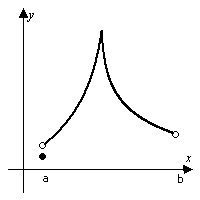Two formulas that approximate the dosage of a drug prescribed for children are: Young's Rule: C =  and Cowling's Rule: C =
and Cowling's Rule: C =  .In each formula, A = the child's age in years, D = an adult dosage, and C = the proper child's dosage. The formulas apply for ages 2 through 13. Use these formulas to solve the problem.For a 6-year old child, what is the difference in the dosage given by Young's Rule and Cowling's Rule? Express the answer as a single rational (or fractional) expression in terms of D.
.In each formula, A = the child's age in years, D = an adult dosage, and C = the proper child's dosage. The formulas apply for ages 2 through 13. Use these formulas to solve the problem.For a 6-year old child, what is the difference in the dosage given by Young's Rule and Cowling's Rule? Express the answer as a single rational (or fractional) expression in terms of D.
A.  D
D
B.  D
D
C. -  D
D
D.  D
D
Answer: D
Mathematics
You might also like to view...
Determine from the graph whether the function has any absolute extreme values on the interval [a, b].
A. No absolute extrema. B. Absolute minimum and absolute maximum. C. Absolute maximum only. D. Absolute minimum only.
Mathematics
Divide in the indicated base.2336 ÷ 36
A. 516 B. 1516 C. 526 D. 416
Mathematics
Determine whether the following is always true or not always true. Given reasons for your answers.|u| = 
What will be an ideal response?
Mathematics
Provide an appropriate response.A worker took a 10% decrease in his salary. What is his monthly salary now, if before the pay cut he was making $1,200 per month?
Fill in the blank(s) with the appropriate word(s).
Mathematics